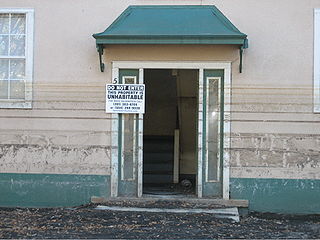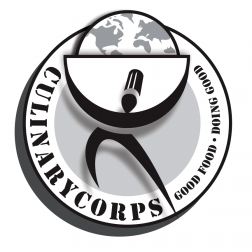Related Research Articles

Waveland is a city located in Hancock County, Mississippi, United States, on the Gulf of Mexico. It is part of the Gulfport–Biloxi, Mississippi Metropolitan Statistical Area. The city of Waveland was incorporated in 1972. As of the 2010 census, the city had a population of 6,435. Waveland was nearly destroyed by Hurricane Camille on August 17, 1969, and by Hurricane Katrina on August 29, 2005.

Clarence Raymond Joseph Nagin Jr. is an American former politician who was the 60th Mayor of New Orleans, Louisiana, from 2002 to 2010. A Democrat, Nagin became internationally known in 2005 in the aftermath of Hurricane Katrina.

The Times-Picayune/The New Orleans Advocate is an American newspaper published in New Orleans, Louisiana, since January 25, 1837. The current publication is the result of the 2019 acquisition of The Times-Picayune, which was the result of the 1914 union of The Picayune with the Times-Democrat, by the New Orleans edition of The Advocate in Baton Rouge.

Hurricane Katrina was a devastating Category 5 Atlantic hurricane that resulted in 1,836 fatalities and caused damage estimated between $97.4 billion to $145.5 billion in late August 2005, particularly in the city of New Orleans and its surrounding areas. At the time, it was the costliest tropical cyclone on record, tied now with Hurricane Harvey of 2017. Katrina was the twelfth tropical cyclone, the fifth hurricane, and the third major hurricane of the 2005 Atlantic hurricane season. It was also the fourth-most intense Atlantic hurricane on record that made landfall in the contiguous United States by barometric pressure.

As the center of Hurricane Katrina passed southeast of New Orleans on August 29, 2005, winds downtown were in the Category 1 range with frequent intense gusts. The storm surge caused approximately 23 breaches in the drainage canal and navigational canal levees and flood walls. As mandated in the Flood Control Act of 1965, responsibility for the design and construction of the city's levees belongs to the United States Army Corps of Engineers and responsibility for their maintenance belongs to the Orleans Levee Board. The failures of levees and flood walls during Katrina are considered by experts to be the worst engineering disaster in the history of the United States. By August 31, 2005, 80% of New Orleans was flooded, with some parts under 15 feet (4.6 m) of water. The famous French Quarter and Garden District escaped flooding because those areas are above sea level. The major breaches included the 17th Street Canal levee, the Industrial Canal levee, and the London Avenue Canal flood wall. These breaches caused the majority of the flooding, according to a June 2007 report by the American Society of Civil Engineers. The flood disaster halted oil production and refining which increased oil prices worldwide.

The disaster recovery response to Hurricane Katrina in late 2005 included U.S. federal government agencies such as the Federal Emergency Management Agency (FEMA), the United States Coast Guard (USCG), state and local-level agencies, federal and National Guard soldiers, non-governmental organizations, charities, and private individuals. Tens of thousands of volunteers and troops responded or were deployed to the disaster; most in the affected area but also throughout the U.S. at shelters set up in at least 19 states.

The reconstruction of New Orleans refers to the rebuilding process endured by the city of New Orleans after Hurricane Katrina destroyed much of the city on August 29, 2005. The storm caused levees to fail, releasing tens of billions of gallons of water. The levee failure contributed to extensive flooding in the New Orleans area and surrounding parishes. About 80% of all structures in Orleans Parish sustained water damage. Over 204,000 homes were damaged or destroyed, and more than 800,000 citizens displaced—the greatest displacement in the United States since the Dust Bowl of the 1930s. Wind damage was less severe than predicted. The damage that took place that needed to be repaired cost about $125 billion.

The Lower Ninth Ward is a neighborhood in the city of New Orleans, Louisiana. As the name implies, it is part of the 9th Ward of New Orleans. The Lower Ninth Ward is often thought of as the entire area within New Orleans downriver of the Industrial Canal; however, the City Planning Commission divides this area into the Lower Ninth Ward and Holy Cross neighborhoods.

The New Orleans Public Library (NOPL) is the public library service of the city of New Orleans, Louisiana, United States.

Central City is a neighborhood of the city of New Orleans. It is located in the 11th Ward of New Orleans in Uptown, just above the Garden District, on the "lakeside" of St. Charles Avenue. A subdistrict of the Central City/Garden District Area, its boundaries as defined by the City Planning Commission are: MLK Boulevard, South Claiborne Avenue and the Pontchartrain Expressway to the north, Magazine, Thalia, Prytania and Felicity Streets and St. Charles Avenue to the south and Toledano Street, Louisiana Avenue and Washington Avenue to the west. This old predominantly African-American neighborhood has been important in the city's brass band and Mardi Gras Indian traditions.

Lakeview is a neighborhood of the city of New Orleans. A subdistrict of the Lakeview District Area, its boundaries as defined by the City Planning Commission are: Allen Toussaint Boulevard to the north, Orleans Avenue to the east, Florida Boulevard, Canal Boulevard and I-610 to the south and Pontchartrain Boulevard to the west. Lakeview is sometimes used to describe the entire area bounded by Lake Pontchartrain to the north, the Orleans Avenue Canal to the east, City Park Avenue to the south and the 17th Street Canal to the west. This larger definition includes the West End, Lakewood and Navarre neighborhoods, as well as the Lakefront neighborhoods of Lakeshore and Lake Vista.

SBP is a nonprofit, disaster relief organization. After temporarily volunteering in St. Bernard Parish, Louisiana after Hurricane Katrina, Liz McCartney and Zack Rosenburg returned permanently in March 2006 and founded the project. The organization eventually expanded to include offices in Baton Rouge, Louisiana, Joplin, Missouri, Columbia, South Carolina, New Jersey, New York, and West Virginia. By August 2022, SBP's national impact included assistance to 5,500 families, including the rebuilding of over 1,200 homes, including 600 in New Orleans. They have collaborated extensively with Toyota and Americorps. As a result of its accomplishments, the organization and its founders have been recognized by Senator Mary Landrieu, CNN, and President Barack Obama.

Internally displaced persons in the United States are people from the Gulf States region in the southern United States, most notably New Orleans, Louisiana, who were forced to leave their homes because of the devastation brought on by Hurricane Katrina in 2005 and were unable to return because of a multitude of factors, and are collectively known as the Gulf Coast diaspora and by standard definition considered IDPs. At their peak, hurricane evacuee shelters housed 273,000 people and, later, FEMA trailers housed at least 114,000 households. Even a decade after Hurricane Katrina, many victims who were forced to relocate were still unable to return home.

Alfred Clifton Hughes, KCHS is a retired American prelate of the Catholic Church. He served as the 13th archbishop of the Archdiocese of New Orleans in Louisiana from 2002 to 2009.

The Seventh Ward is a neighborhood of the city of New Orleans. A sub-district of the Mid-City District Area, its boundaries as defined by the New Orleans City Planning Commission are: A.P. Tureaud Avenue, Agriculture, Allen, Industry, St. Anthony, Duels, Frenchmen and Hope Streets to the north, Elysian Fields Avenue to the east, St. Claude and St. Bernard Avenues, North Rampart Street and Esplanade Avenue to the south, and North Broad Street to the west.
Edward James Blakely, for most his career, was a professor of Urban Planning at the University of California at Berkeley. In 1994, he retired as a leading scholar in the field with award-winning books. He is known primarily for having been executive director of Recovery Management for the City of New Orleans.
Ted M. Jackson is an American photojournalist, writer and public speaker who has spent over three decades exploring the human condition while covering news, sports and features for the Times-Picayune in New Orleans, Louisiana. He contributes to the newspaper’s extensive gallery of photographs of the Greater New Orleans Area.
Camp Restore is a Christian organization that operates a shelter for up to 240 people at the Prince of Peace Lutheran church in New Orleans East. First opened on September 10, 2006, these accommodations are used to house volunteers from across the United States as they help rebuild homes and buildings in the surrounding communities that had been destroyed by Hurricane Katrina. It also has locations in Baton Rouge and Detroit.

CulinaryCorps is an American non-profit organization that recruits culinary students and professionals to volunteer their professional skills on trips to communities in the United States.
Juan Anthony LaFonta is a New Orleans personal injury attorney and former Democratic State Representative for Louisiana representing Louisiana House District 96. He was elected in 2005 during a special election and was unopposed in his 2007 re-election.
References
- ↑ "Home". unitedsaints.org.
- ↑ "HandsOn New Orleans". HandsOn New Orleans. Retrieved 2019-03-15.
- ↑ http://www.nola.com/picayunes/t-p/nopicayunes/index.ssf?/base/news-7/124288394782700.xml&coll=1 [ dead link ]
- ↑ "Mission | United Saints Recovery Project". www.unitedsaints.org. Archived from the original on 2010-01-24.